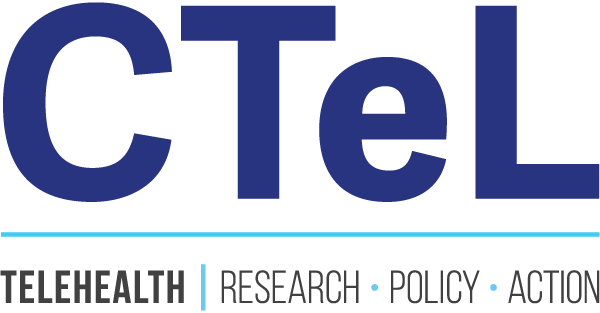Breaking News: CMS Finalizes Telehealth Changes in 2025 Physician Fee Schedule (PFS) Rule
Breaking News: CMS Finalizes Telehealth Changes in 2025 Physician Fee Schedule (PFS) Rule
November 1, 2024 – In a major policy update, the Centers for Medicare & Medicaid Services (CMS) has issued the final rule for the Calendar Year (CY) 2025 Medicare Physician Fee Schedule (PFS), effective January 1, 2025. This new rule outlines a sweeping set of changes aimed at creating a more equitable, accessible, and innovative healthcare system. Key modifications focus on telehealth services, expanding access for beneficiaries while adjusting certain policies established during the COVID-19 Public Health Emergency (PHE).
Key Telehealth Policy Updates in the 2025 PFS Rule
As the COVID-19 PHE telehealth waivers are set to expire, CMS is implementing adjustments to preserve critical elements while phasing out others. Here’s a detailed look at the finalized changes for Medicare telehealth services:
1. Expansion of Medicare Telehealth Services
New Services Added to the Telehealth List: For CY 2025, CMS has provisionally added caregiver training services to the Medicare Telehealth Services List, providing support for family members or others assisting with patient care. Additionally, PrEP counseling and safety planning interventions have been permanently added. This expansion broadens the range of telehealth services available to beneficiaries, reinforcing CMS’s goal of a patient-centered approach.
Suspension of Frequency Limits: CMS is extending the suspension of frequency limitations on telehealth for specific service types. This includes subsequent inpatient and nursing facility visits as well as critical care consultations, allowing for greater flexibility in high-need cases.
2. Audio-Only Communication Option for Telehealth Services
Continued Audio-Only Telehealth: Starting January 1, 2025, CMS is finalizing a policy that allows Medicare telehealth services to include two-way, real-time audio-only technology if the beneficiary is either unable to use video technology or prefers not to do so. This change applies to services delivered to beneficiaries in their homes, providing an alternative for patients who face barriers to video telehealth.
3. Virtual Direct Supervision for Certain Services
Permanent Virtual Supervision: CMS has permanently adopted a virtual supervision model for certain services, permitting supervising physicians to provide “direct supervision” via real-time, interactive audio-visual telecommunications for select types of care. Specifically:
Incident-to Services and Office Visits: This applies to certain services furnished incident to a physician’s professional service (e.g., services billed under CPT code 99211) and office visits for established patients who may not require a physician’s physical presence.
Temporary Supervision Flexibility Extension: For other services requiring direct supervision, CMS will continue to allow virtual supervision through the end of 2025.
4. Address Flexibility for Practitioners Using Home-Based Telehealth
Practice Address Use Instead of Home Address: CMS is finalizing a provision that enables practitioners providing telehealth services from their homes to continue using their officially enrolled practice addresses rather than home addresses. This decision maintains privacy and simplifies logistics for home-based telehealth providers.
5. Telehealth Enhancements for Opioid Treatment Programs (OTPs)
Telehealth services have been expanded for opioid use disorder (OUD) treatment in opioid treatment programs, with important modifications to support patients requiring OUD care:
Audio-Only Periodic Assessments: CMS is permanently allowing periodic assessments to be conducted using audio-only technology, where applicable. This flexibility enables patients to remain engaged in care while accommodating accessibility barriers.
Intake via Telehealth: OTPs may now initiate treatment with methadone via a two-way audio-visual telehealth system, using the OTP intake add-on code (HCPCS code G2076). This change reflects CMS’s goal of meeting patients where they are and reducing barriers to beginning treatment.
Additional Payment for SDOH Risk Assessments: CMS has approved payment for Social Determinants of Health (SDOH) risk assessments as part of intake activities, recognizing the importance of addressing health-related social needs that may affect treatment engagement.
New Coordinated Care Add-On Codes: CMS is adding payment codes to support OTPs’ work in care coordination and referrals to community-based organizations. These codes aim to assist with patient navigation, peer recovery support, and coordination of harm reduction services, all critical for sustaining patient engagement in treatment.
Flexibility for Rural Health Clinics (RHCs) and Federally Qualified Health Centers (FQHCs)
Temporary Non-Behavioral Health Telehealth Payments: CMS has finalized that RHCs and FQHCs can continue to bill for non-behavioral health telehealth services (including audio-only) through December 31, 2025, using HCPCS code G2025. Payment will be calculated based on the average amount for all PFS telehealth services, weighted by volume.
Delay of In-Person Requirement for Mental Health Services: The in-person visit requirement for mental health services delivered by RHCs and FQHCs via telehealth has been delayed until January 1, 2026, giving more time for facilities and patients to adjust.
Looking Forward: The Impact on Telehealth in 2025
CMS’s final rule demonstrates a continued commitment to telehealth as a core component of healthcare delivery, balancing regulatory flexibility with a return to pre-PHE guidelines. The new provisions recognize the enduring need for telehealth, particularly for individuals with limited access to traditional healthcare settings, while ensuring high-quality standards for Medicare beneficiaries.
These updates reflect an evolving Medicare landscape that leverages telehealth to its fullest extent, expanding access and maintaining flexibility where it’s most needed. Telehealth providers, caregivers, and opioid treatment programs are among the key beneficiaries of CMS’s 2025 rule, setting a forward-looking standard for healthcare accessibility and innovation.
Stay tuned for further details as providers and patients prepare to adapt to these new policies starting January 1, 2025.


